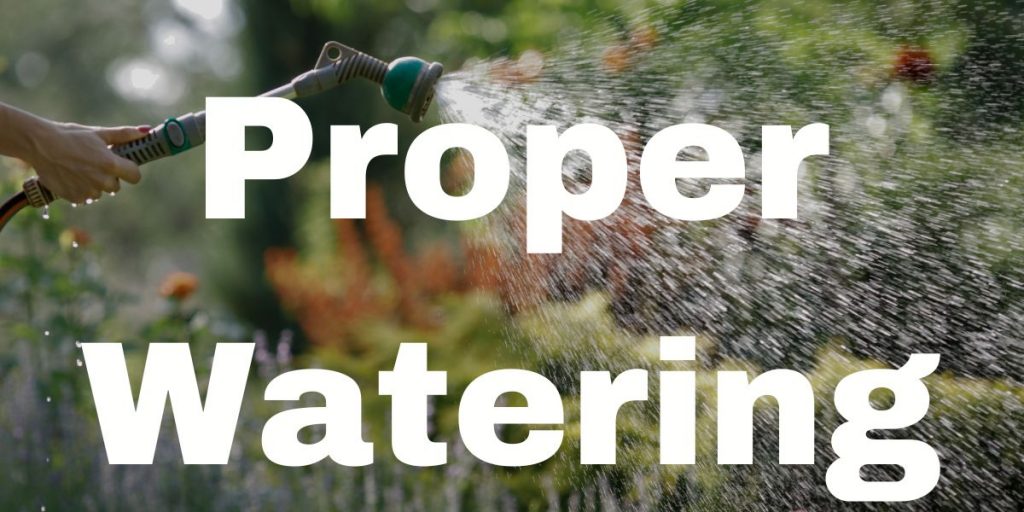One of the most time consuming and misunderstood summer projects is that of watering the lawn, flowers and the vegetable garden. Here are some hints on the when, where, why and how’s of outdoor watering during the summer months.
Save Money and Water on Your Lawn
It’s estimated that an acre of lawn can take up to 27,000 gallons of water every week during the hot summer months. But what’s even more alarming is that the average homeowner overwaters their lawn by 20 to 40%, which is not only a major misuse of water, but a costly one as well. Just think if 200,000 homeowners saved just 100 gallons of lawn water a week, it would amount to a saving of 20 million gallons of water each week.
Some people forego a green lawn during the summer months, letting it go dormant until autumnal rains. However, if you like maintaining a green lawn, that’s still possible in the Pacific Northwest summer. Most lawn authorities suggest that the lawn only needs the equivalent of one inch of water per week to keep it green all summer. This amount of water can be from sprinkling or a combination of rainfall and watering. One of the ways in which to measure the amount of water you are applying to the lawn is to set out three or four coffee cans, then measure the amount of water that collects in them after sprinkling for an hour or so.
It is estimated that sprinkler water evaporates four to eight times faster if the sprinkling is done during the warmer afternoon hours, so early morning is by far the best time to do any watering. Evening watering also cuts down on evaporation but the soil then is wet and cool going into the evening hours and the chances of getting mildew or other diseases increase considerably.
Some specialists suggest that grass clippings be left on the lawn during the hot summer months. The clippings serve as a moist retentive mulch. However, I haven’t been able to convince my wife that this is a good idea. She says, they all end up on the carpeting in the house. So we collect and compost our grass clippings. And, of course, compost or other organic mulches are ideal to use in the garden because of their ability to absorb moisture and retain it longer in the soil.
When setting sprinklers, put them in a spot where you only water the area desired. Don’t waist water on sidewalks, driveways and other paved surfaces. Sometimes this means using specialty sprinklers that can be set to water in odd patterns. For example, there is a sprinkler that waters in squares, while most water in rectangles or circles. If you have a long narrow area such as a parking strip or an area between homes, the ideal way to cover the area is with a soaker hose. Whatever type of watering devise you use be sure it is efficient. One way to test and determine how efficient a sprinkler is, is to set four or six coffee cans or similar containers on each side of the sprinkler at equal distances from the sprinkler. Then after about one hour check to see if equal amounts of water are in each container. This is important because some of the less efficient sprinklers tend to leave high amounts of water at the edges and little in the middle. These sprinklers have to be reset to account for the differences. If you can, get a more efficient one to replace it.
Watering the Rest of the Garden
The vegetable garden can be watered by soaker hose, sprinkler or by hand. Water in the morning whenever possible. Like the lawn it needs about an average of one inch of water per week, far less than many people assume.
If you are uncertain about whether it is time to water again simply scuff the soil with your hand or a trowel and if the soil is moist down an inch or two, then you know there is no need for watering yet. On the other hand, if the soil is dry, then it is time to water again. This is a great tool in determining watering needs in the vegetable garden, flower areas and landscape beds.
Hanging baskets and pots or containers require totally different watering procedures. These tend to dry out quickly because they are exposed to the air on the top, sides and in the case of hanging baskets the bottom too. So check watering needs every few days. During exceptionally hot weather (anything over 80) hanging baskets may need watering daily, or even twice daily if the basket has limited soil area.
The ideal way to water any part of the garden is with an efficient permanent sprinkler system or the individual drip system nozzles. These can be set on timers for efficiency and to water during the early morning hours. Watering by hand conserves the most water by allowing you to target the driest areas, but also takes the most time and energy. Choose whatever methods work best for you.
Mulching flower and vegetable beds with grass clippings, straw, newspaper or compost will help retain moisture and keep weeds down too. Aisles in the vegetable garden can be mulched with wood chips, newspaper, grass clippings, sawdust or bark to keep weeds down and keep the area neater appearing.
By adopting simple wise watering practices you can conserve water and save money at the same time.
